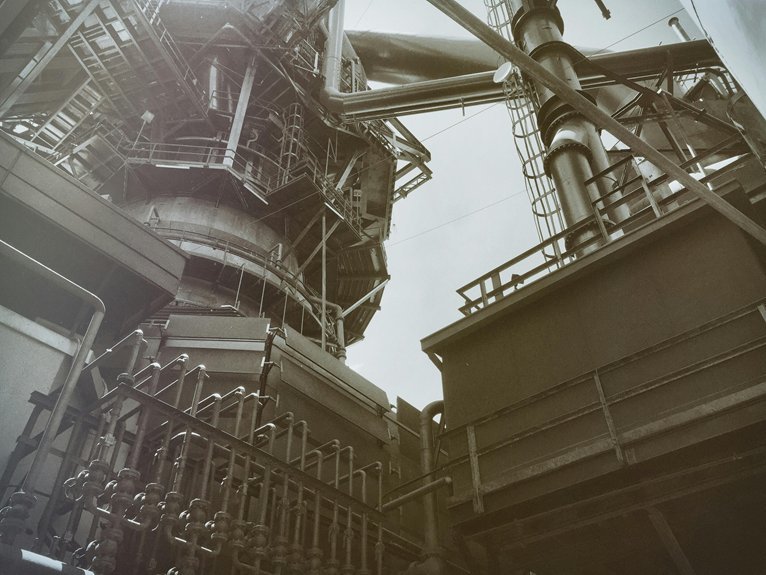
You’re on a construction site, and power is vital. Portable generators are your go-to solution, offering flexibility and reliability. But with so many types and sizes, how do you decide which one fits your needs? Understanding power consumption and load management is essential. Plus, features like portability, noise reduction, and durability can’t be overlooked. Curious about making the right choice for a successful project?
Types and Sizes of Portable Generators
When you’re choosing a portable generator for a construction site, understanding the different types and sizes is essential. Standard generators, fueled by gasoline, diesel, or propane, offer reliable AC power but can be noisy. Inverter generators, though quieter and more fuel-efficient, might not meet high-power demands but excel in generator efficiency and reduced generator noise, making them ideal for sensitive electronics. For silent, emission-free options, portable power stations are perfect for light, intermittent use, though limited by battery life.
Consider size categories for your needs: small units handle light tools, while medium ones balance power and portability for typical job site tasks. Large and extra-large generators, though less portable, provide higher outputs for multiple tools or major projects.
Determining Power Needs for Construction Equipment
As you plan for construction site power needs, it’s crucial to accurately assess the power demands of your equipment. Begin by identifying the tool-specific power consumption of each piece of equipment, like concrete mixers and power saws, which often require higher capacity generators. Conduct combined load calculations by summing the power requirements of all tools you’ll use simultaneously. This prevents power shortages and guarantees peak efficiency.
Consider demand factors and implement load management strategies to handle peak loads without overloading your generator. Choose scalable power solutions to meet variable demands, allowing flexibility as project needs change. Accurately determining power needs through these methods will help you select the right generator size, avoiding oversizing and unnecessary fuel consumption.
Key Features and Safety Considerations
After determining your construction site’s power needs, focus on the key features and safety considerations of portable generators. Evaluate generator capabilities, such as power output variety, to guarantee they meet your equipment’s demands. Choose between gasoline, diesel, or propane fuel types based on availability and preference. Opt for models with noise reduction if working near residential areas or during long operations. Prioritize durability with weather-resistant designs for tough conditions, and consider parallel capabilities if higher power output is necessary.
For safety, adhere to safety protocols by guaranteeing proper grounding and using generators outdoors to prevent carbon monoxide poisoning. Keep generators away from flammable materials, and don’t forget hearing protection for noise hazards. Always use a transfer switch to connect to structures safely.
Portability and Mobility on Construction Sites
Portable generators offer numerous advantages for construction sites, primarily due to their exceptional portability and mobility. You’ll appreciate their easy transportation, as they’re designed to be moved effortlessly between locations, enhancing transportation efficiency. Their compact design fits snugly into tight spaces, and lightweight models make handling a breeze. This site adaptability reduces logistical headaches when setting up in remote or hard-to-reach areas. They’re quickly deployed to meet immediate power needs, ensuring continuous workflow and reducing downtime.
Their mobility benefits shine through in flexible power distribution across dynamic work environments. You can easily shift them between sites or areas, customizing power setup and reducing wiring hazards with minimal extension cords. Ultimately, portable generators boost productivity by providing reliable, adaptable power where and when you need it.
Regulatory Compliance and Maintenance Practices
When utilizing portable generators on construction sites, it’s important to adhere to regulatory compliance and maintenance practices to guarantee safety and efficiency. You must confirm your generator complies with EPA emission regulations to limit pollutants like CO and NOx. OSHA requires proper site safety, including noise control and secure placement. Keeping maintenance logs is essential for inspections and audits, demonstrating adherence to standards. Routine maintenance tasks, divided into daily, weekly, and annual checks, help maintain peak function. Check fluid levels, battery condition, and circuit breakers regularly. Annual tasks should include oil changes and load bank testing. Detailed logs not only support compliance but also help identify recurring issues early, reducing the risk of failure and costly repairs.
